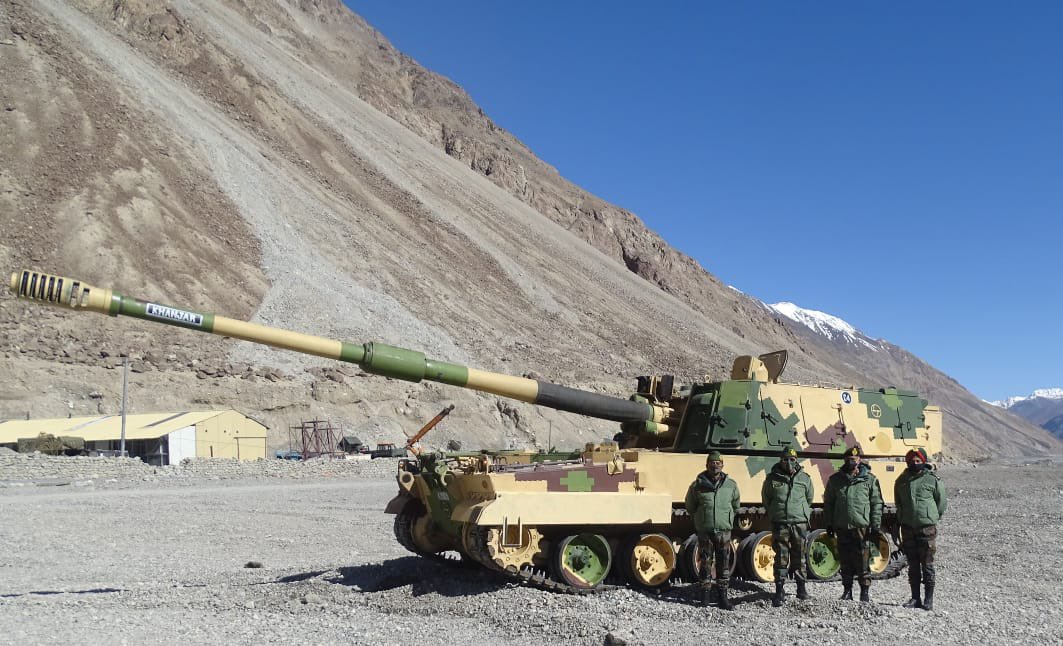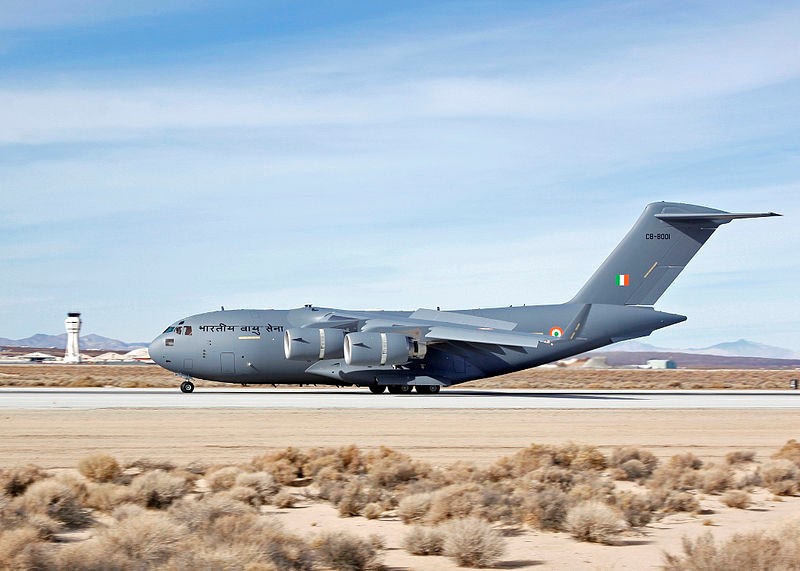
SU-30MKI India.
“The ongoing conflict in Russia and Ukraine has also resulted in delays in the supply of spares for the fighter aircraft fleet.”
The Make in India initiative initially encouraged the Indian Armed Forces to gradually purchase domestic weapons or equipment whenever possible, before establishing import ban lists in the past year (see: “India Orders More Domestically Produced Self-Propelled Artillery System,” OE Watch, #3 2022). However, as the accompanying excerpted articles report, Russia’s war in Ukraine is forcing the Indian government to reexamine certain acquisitions and upgrades for the armed forces that could further boost the Make in India initiative. The article from the independent English-language newspaper The Hindu reports Minster of Defense Rajnath Singh’s comments in early May 2022 after the government cancelled plans to acquire and upgrade two systems from Russia. He mentions that the government is drawing lessons from the war in Ukraine to become more self-sufficient and acknowledges that there will be short-term economic issues while becoming less dependent on imports. The article from the English-language independent news magazine India Today reports that India’s Air Force cancelled a purchase of 48 Mi-17 V5 helicopters from Russia in support of the Make in India initiative. Government officials claimed that “the decision to withdraw the tender for the 48 helicopters was taken long before Russia’s invasion of Ukraine and that the Indian Air Force is now going to support an Indian effort for a helicopter. The article from the English-language daily Live Mint reports on the Indian government’s decision to cancel a plan to upgrade a number of its Su-30 fighters just days after cancelling the purchase of Mi-17s. The article notes that the government made the decision because of the war in Ukraine and the Make in India initiative. It also notes that the Indian Air Force had planned to upgrade 85 Su-30s with better radar and electronic warfare capabilities. The article mentions that there are delays for spare parts for the fighters and that, while India has stocked up on enough for now, “it is expected that the supply of these spares and other equipment may become an issue in near future.” Overall, India did not say that it would stop looking to Russia to acquire or upgrade systems, but the war in Ukraine is causing India to reassess how much it will depend on the Russian defense industry.
Sources:
“Self-reliance vital to protect nation’s sovereignty: Rajnath Singh,” The Hindu (independent English-language newspaper), 5 May 2022. https://www.thehindu.com/news/national/self-reliance-vital-to-protect-nations-sovereignty-rajnath-singh/article65385058.ece
…Self-reliance in defence is essential not only for building domestic capacity but also safeguarding the sovereignty of the country, Defence Minister Rajnath Singh said on Thursday…
…Talking of ‘Aatmanirbharta’ in defence, Mr. Singh said our past experiences had taught us that India could not depend on imports for its security. “Recent conflicts, especially the situation in Ukraine, have told us that not just defence supplies, but commercial contracts are also prone to be affected when it comes to national interests,” he stated.
In such a situation, self-reliance was necessary not only for building domestic capacity, but also for maintaining our independence, Mr. Singh said…“We may not even find it economical in the beginning. But we are very clear about this, that in the middle and long-term, it will help in building the foundation of a robust industrial base not only in the defence sector, but in every sphere of the industry,” he asserted…
Source: Manjeet Negi, “To boost Make in India, IAF cancels plans to buy 48 Mi-17 choppers from Russia,” India Today (English-language independent news magazine), 16 April 2022. https://www.indiatoday.in/india/story/make-in-india-iaf-mi-17-choppers-russia-1938341-2022-04-16
Aiming to support the Make in India initiative in the Defence programme of Prime Minister Narendra Modi, the Indian Air Force has decided to cancel plans to buy 48 more Mi-17 V5 helicopters from Russia.
Top government sources told India Today that the decision to withdraw the tender for the 48 helicopters that was taken much before the conflict between Russia and Ukraine broke out and has nothing to do with the global scenario.
“The tender for 48 Mi-17V5 helicopters has been withdrawn in view of the push for indigenisation. The IAF would now be supporting an indigenous programme for helicopters,” the sources said.
Source: “India shelves ₹35,000 cr plan to upgrade Su-30 fighter fleet amid Russia-Ukraine war,” Live Mint (online version of the financial English-language daily newspaper), 8 May 2022. https://www.livemint.com/news/india/india-shelves-rs-35-000-cr-plan-to-upgrade-su-30-fighter-fleet-amid-russia-ukraine-war-11652006926134.html
Several factors have shelved the Indian Air Force’s plan to upgrade its Su-30 MKI fighter aircraft fleet. The factors include the war between Russia and Ukraine and current policy of Make-in-India of the Indian government.
IAF had planned to equip the Su-30 aircraft with more powerful radars and the latest electronic warfare capabilities to make it more powerful as per the latest standards.
IAF was planning to upgrade 85 of their planes up to the latest standards in collaboration with the Russians and Hindustan Aeronautics Limited. The plan has been put on the backburner for now in view of the present situation…
The ongoing conflict in Russia and Ukraine has also resulted in delays in the supply of spares for the fighter aircraft fleet…
Sources said even though the spares situation is manageable at the moment and expected to remain so in the near future as India had stocked them up in a considerable amount post the Uri surgical strikes and the ongoing China conflict. However, it is expected that the supply of these spares and other equipment may become an issue in near future…
Image Information:
Image: SU-30MKI India.
Source: https://commons.wikimedia.org/wiki/File:SU-30MKI_India.jpg
Attribution: Public Domain



